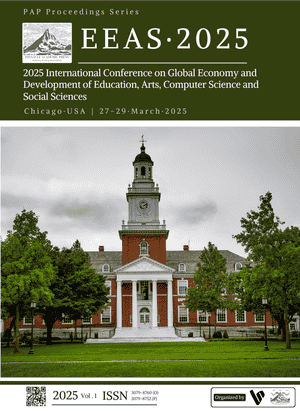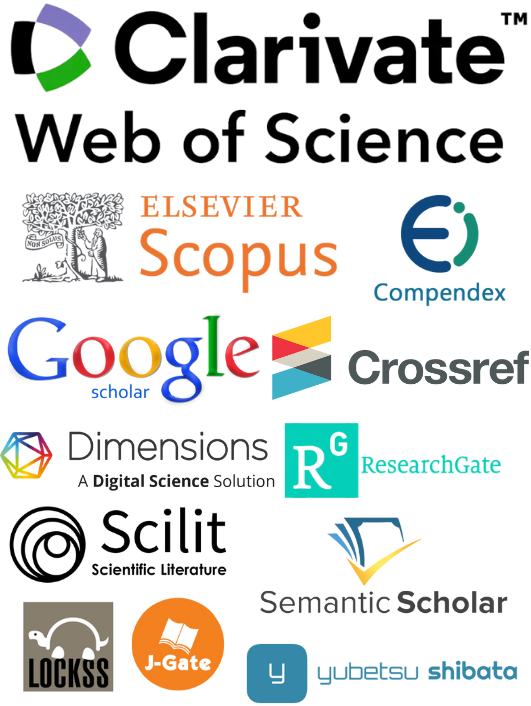Critical Analysis of Cultural Representations in Chinese College English Textbooks: Student Perceptions and Implications for Intercultural Communication
Keywords:
globalization, English education, cultural representation, textbook analysis, intercultural communication, cultural diversity, cultural aphasiaAbstract
In the context of globalization, English education has become a crucial component of the internationalization of higher education in China. College English textbooks, serving as both academic resources and cultural carriers, reflect the political, social, and ideological contexts of society and often contain biases and stereotypes that influence students’ perceptions of English-speaking cultures. This study aims to critically analyze the cultural representations in Chinese college English textbooks and explore students’ perceptions of these representations. Employing a qualitative methodology, the research utilizes textbook content analysis and student interviews, emphasizing intracultural diversity and challenging stereotypical single perspectives. The findings reveal a tendency toward superficiality and homogenization in the portrayal of foreign cultures, as well as a somewhat monolithic representation of Chinese culture, resulting in "cultural aphasia" in students’ cultural expressions. The study advocates for textbook development that pays greater attention to the complexity and diversity of cultures, promoting more equitable and in-depth intercultural understanding to enhance the quality and effectiveness of language education.
References
1. K. Graves, “The language curriculum: A social contextual perspective,” Lang. Teach., vol. 41, no. 2, pp. 147-181, 2008, doi: 10.1017/S0261444807004867.
2. J. C. Richards, “Curriculum approaches in language teaching: Forward, central, and backward design,” RELC J., vol. 44, no. 1, pp. 5-33, 2013, doi: 10.1177/0033688212473293.
3. H. C. Yeh, “The synergy of generative AI and inquiry-based learning: transforming the landscape of English teaching and learning,” Interact. Learn. Environ., vol. 33, no. 1, pp. 88-102, 2025, doi: 10.1080/10494820.2024.2335491.
4. K. Qu and X. Wu, “ChatGPT as a CALL tool in language education: A study of hedonic motivation adoption models in English learning environments,” Educ. Inf. Technol., pp. 1-33, 2024, doi: 10.1007/s10639-024-12598-y.
5. S. Luo, D. Zou, and L. Kohnke, “A systematic review of research on xReality (XR) in the English classroom: Trends, research areas, benefits, and challenges,” Comput. Educ.: X Reality, vol. 4, p. 100049, 2024, doi: 10.1016/j.cexr.2023.100049.
6. A. Derakhshan, T. Teo, and S. Khazaie, “Is game-based language learning general or specific-oriented? Exploring the ap-plicability of mobile virtual realities to medical English education in the middle east,” Comput. Educ., vol. 213, p. 105013, 2024, doi: 10.1016/j.compedu.2024.105013.
7. Y. Liu, B. H. Nam, and Y. Yang, “Revisiting symbolic power and elite language education in China: a critical narrative ethnography of the English education major at a top language university in Shanghai,” Educ. Rev., vol. 76, no. 6, pp. 1498-1524, 2024, doi: 10.1080/00131911.2023.2184774.
8. F. Dervin and F. Dervin, “Misnomers,” in Interculturality in Educ.: A Theor. and Methodol. Toolbox, pp. 7-22, 2016, doi: 10.1057/978-1-137-54544-2_2.
9. K. I. Hossain, “Reviewing the role of culture in English language learning: Challenges and opportunities for educators,” Soc. Sci. Hum. Open, vol. 9, p. 100781, 2024, doi: 10.1016/j.ssaho.2023.100781.
10. X. Xu and L. M. Thien, “Unleashing the power of perceived enjoyment: exploring Chinese undergraduate EFL learners' intention to use ChatGPT for English learning,” J. Appl. Res. High. Educ., vol. 17, no. 2, pp. 578-593, 2025, doi: 10.1108/JARHE-12-2023-0555.
11. J. Du and B. K. Daniel, “Transforming language education: A systematic review of AI-powered chatbots for English as a foreign language speaking practice,” Comput. Educ. Artif. Intell., vol. 6, p. 100230, 2024, doi: 10.1016/j.caeai.2024.100230.
12. G. Canale, “(Re) Searching culture in foreign language textbooks, or the politics of hide and seek,” Lang. Cult. Curric., vol. 29, no. 2, pp. 225-243, 2016, doi: 10.1080/07908318.2016.1144764.
13. Y. Hang, S. Khan, A. Alharbi, and S. Nazir, “Assessing English teaching linguistic and artificial intelligence for efficient learning using analytical hierarchy process and Technique for Order of Preference by Similarity to Ideal Solution,” J. Softw. Evol. Process, vol. 36, no. 2, e2462, 2024, doi: 10.1002/smr.2462.
14. C. Fox, “The authenticity of intercultural communication,” Int. J. Intercult. Relat., vol. 21, no. 1, pp. 85-103, 1997, doi: 10.1016/S0147-1767(96)00012-0.
15. A. Meirbekov, S. Nyshanova, A. Meiirbekov, L. Kazykhankyzy, Z. Burayeva, and B. Abzhekenova, “Digitisation of English language education: Instagram and TikTok online educational blogs and courses vs. traditional academic education. How to increase student motivation?” Educ. Inf. Technol., vol. 29, no. 11, pp. 13635-13662, 2024, doi: 10.1007/s10639-023-12396-y.
16. G. Liu and C. Ma, “Measuring EFL learners’ use of ChatGPT in informal digital learning of English based on the technology acceptance model,” Innov. Lang. Learn. Teach., vol. 18, no. 2, pp. 125-138, 2024, doi: 10.1080/17501229.2023.2240316.
17. W. Y. J. Ho and K. W. Tai, “Translanguaging in digital learning: The making of translanguaging spaces in online English teaching videos,” Int. J. Biling. Educ. Biling., vol. 27, no. 9, pp. 1212-1233, 2024, doi: 10.1080/13670050.2021.2001427.
18. H. Crompton, A. Edmett, N. Ichaporia, and D. Burke, “AI and English language teaching: Affordances and challenges,” Br. J. Educ. Technol., vol. 55, no. 6, pp. 2503-2529, 2024, doi: 10.1111/bjet.13460.
19. D. Tafazoli, “Exploring the potential of generative AI in democratizing English language education,” Comput. Educ. Artif. Intell., vol. 7, p. 100275, 2024, doi: 10.1016/j.caeai.2024.100275.
20. S. McKay, “Teaching English as an international language: The Chilean context,” ELT J., vol. 57, no. 2, pp. 139-148, 2003, doi: 10.1093/elt/57.2.139.
21. Y. Yuan, H. Li, and A. Sawaengdist, “The impact of ChatGPT on learners in English academic writing: Opportunities and challenges in education,” Lang. Learn. Higher Educ., vol. 14, no. 1, pp. 41-56, 2024, doi: 10.1515/cercles-2023-0006.
22. G. L. Liu, Y. Zhang, and R. Zhang, “Examining the relationships among motivation, informal digital learning of English, and foreign language enjoyment: An explanatory mixed-method study,” ReCALL, vol. 36, no. 1, pp. 72-88, 2024, doi: 10.1017/S0958344023000204.
23. X. Wang and B. L. Reynolds, “Beyond the books: Exploring factors shaping Chinese English learners’ engagement with large language models for vocabulary learning,” Educ. Sci., vol. 14, no. 5, p. 496, 2024, doi: 10.3390/educsci14050496.
24. M. H. Al-khresheh, “Bridging technology and pedagogy from a global lens: Teachers’ perspectives on integrating ChatGPT in English language teaching,” Comput. Educ. Artif. Intell., vol. 6, p. 100218, 2024, doi: 10.1016/j.caeai.2024.100218.
25. L. Huseinović, “The effects of gamification on student motivation and achievement in learning English as a foreign language in higher education,” MAP Educ. Humanit., vol. 4, pp. 10-36, 2024, doi: 10.53880/2744-2373.2023.4.10.
26. G. L. Liu, R. Darvin, and C. Ma, “Exploring AI-mediated informal digital learning of English (AI-IDLE): A mixed-method investigation of Chinese EFL learners’ AI adoption and experiences,” Comput. Assist. Lang. Learn., pp. 1-29, 2024, doi: 10.1080/09588221.2024.2310288.
27. H. Dehghani and A. Mashhadi, “Exploring Iranian English as a foreign language teachers’ acceptance of ChatGPT in English language teaching: Extending the technology acceptance model,” Educ. Inf. Technol., vol. 29, no. 15, pp. 19813-19834, 2024, doi: 10.1007/s10639-024-12660-9.
28. G. L. Liu and Y. Wang, “Modeling EFL teachers’ intention to integrate informal digital learning of English (IDLE) into the classroom using the theory of planned behavior,” System, vol. 120, p. 103193, 2024, doi: 10.1016/j.system.2023.103193.
29. X. Li, G. Sang, M. Valcke, and J. van Braak, “Computational thinking integrated into the English language curriculum in primary education: A systematic review,” Educ. Inf. Technol., vol. 29, no. 14, pp. 17705-17762, 2024, doi: 10.1007/s10639-024-12522-4.
30. G. L. Liu, R. Darvin, and C. Ma, “Unpacking the role of motivation and enjoyment in AI-mediated informal digital learning of English (AI-IDLE): A mixed-method investigation in the Chinese context,” Comput. Human Behav., vol. 160, p. 108362, 2024, doi: 10.1016/j.chb.2024.108362.
31. M. Li, “Relocating from EFL to EMI: a case study on L2 learning motivation of English major students in a transnational university in China,” Asian-Pac. J. Second Foreign Lang. Educ., vol. 5, no. 1, p. 21, 2024, doi: 10.1186/s40862-024-00284-y.
32. O. S. Diahyleva, A. Y. Yurzhenko, and O. Y. Kononova, “Exploring the effectiveness of online learning tools and technologies while teaching Maritime English to future ship engineers,” in CTE Workshop Proc., vol. 12, pp. 350-362, Mar. 2025, doi: 10.55056/cte.711.
33. Y. F. Yang, C. C. Tseng, and S. C. Lai, “Enhancing teachers’ self-efficacy beliefs in AI-based technology integration into English speaking teaching through a professional development program,” Teach. Teacher Educ., vol. 144, p. 104582, 2024, doi: 10.1016/j.tate.2024.104582.
34. B. Bachtiar, J. Juhana, and W. R. Pratiwi, “Indonesian English language teachers’ conceptions of critical thinking: Challenge and strategy,” Int. J. Eval. Res. Educ. (IJERE), vol. 13, no. 1, pp. 617-624, 2024, doi: 10.11591/ijere.v13i1.26467.
35. R. Fisher, Q. Tran, and E. Verezub, “Teaching English as a foreign language in higher education using flipped learn-ing/flipped classrooms: A literature review,” Innov. Lang. Learn. Teach., vol. 18, no. 4, pp. 332-351, 2024, doi: 10.1080/17501229.2024.2302984.
36. A. K. Shenton, “Strategies for ensuring trustworthiness in qualitative research projects,” Educ. Inf., vol. 22, no. 2, pp. 63-75, 2004, doi: 10.3233/EFI-2004-22201.
37. M. F. Teng and J. G. Wu, “An investigation of learners’ perceived progress during online education: Do self-efficacy belief, language learning motivation, and metacognitive strategies matter?,” Asia-Pac. Educ. Res., vol. 33, no. 2, pp. 283-295, 2024, doi: 10.1007/s40299-023-00727-z.
38. T. Xiong and Y. Qian, “Ideologies of English in a Chinese high school EFL textbook: A critical discourse analysis,” Asia Pac. J. Educ., vol. 32, no. 1, pp. 75-92, 2012, doi: 10.1080/02188791.2012.655239.
39. S. A. Manan and A. Hajar, ““Disinvestment” in learners’ multilingual identities: English learning, imagined identities, and neoliberal subjecthood in Pakistan,” J. Lang. Identity Educ., vol. 24, no. 1, pp. 132-147, 2025, doi: 10.1080/15348458.2022.2083623.
40. A. M. Mohamed, “Exploring the potential of an AI-based Chatbot (ChatGPT) in enhancing English as a Foreign Language (EFL) teaching: perceptions of EFL Faculty Members,” Educ. Inf. Technol., vol. 29, no. 3, pp. 3195-3217, 2024, doi: 10.1007/s10639-023-11917-z.
41. P. M. Ibna Seraj, B. Klimova, and R. Khan, “Visualizing research trends in English language teaching (ELT) from 2013 to 2022: A bibliometric analysis,” Sage Open, vol. 14, no. 2, p. 21582440241251998, 2024, doi: 10.1177/21582440241251998.
Downloads
Published
Issue
Section
License
Copyright (c) 2025 Chenxi Xiong (Author)

This work is licensed under a Creative Commons Attribution 4.0 International License.



